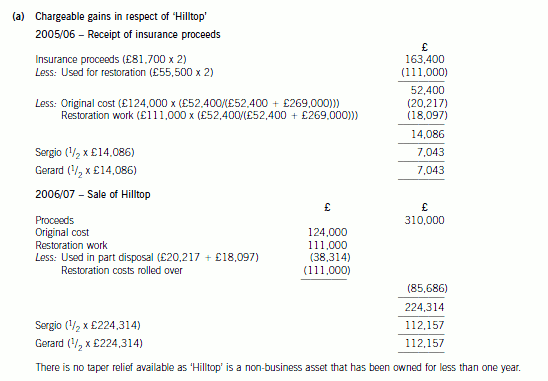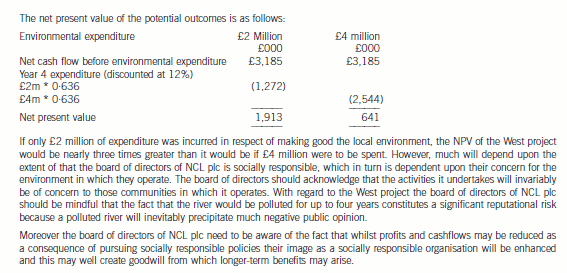2020年广东省ACCA考试信息你了解多少?
发布时间:2020-02-21
即将参加2020年广东省ACCA考试的小伙伴看过来!广东省本年度第一次ACCA考试将在6月进行。那么,关于本次ACCA考试的信息,你了解多少呢?51题库考试学习网带领大家一起来看一看。
ACCA考试报名将在ACCA官网上操作,具体的操作步骤如下:
1、下载文件:ACCA网上注册指引
2、登录在线填写写中文学员登记表,点开即可,用中文填写
注意:请务必如实填写每一项内容,完成后直接在网上直接提交即可,如信息填写不完整或者错误可能会造成注册延误。
ACCA报名提供注册所需资料
①学历或学位证明(高校在校生需提交学校出具的在校证明函及第一年所有课程考试合格的成绩单)的原件、复印件和译文;外地申请者不要邮寄原件,请把申请材料复印件加盖公司或学校公章,或邮寄公证件即可。
②身份证的原件、复印件和译文;或提供护照,不需提交翻译件。
③两张张两寸照片(黑白彩色均可)。
④注册报名费(银行汇票或信用卡支付),请确认信用卡可以从国外付款,否则会影响注册返回时间;如果不能确定建议用汇票交纳注册费。(信用卡支付请在英文网站上注册时直接输入信用卡详细信息,英国总部收到书面注册材料后才会从信用卡上划帐)。
缴纳ACCA报名注册费
报名注册费以双币信用卡或者银行汇票的方式交纳。具体办理汇票方法如下:
凭身份证到有外汇业务和英镑汇票业务的银行办理换汇和汇票业务。其中“汇款回单”中左上方请选择“票汇D/D”,在“收款人”一栏中只要填入ACCA的全称(THE ASSOCIATION OF CHARTERED CERTIFIED ACCOUNTANTS)或简称(ACCA)即可。不需填写英国方面的帐号信息。
将填写完整的网上报名注册表(在英文网站上注册完成后可以打印出两页的PDF文件)、准备好的相关材料交至代表处或直接寄往英国总部。
北京、上海和广州的学员报名注册后,领取Post-Registration Information(学员手册),外地学员或通过邮寄到代表处注册的学员由当地代表处寄发。最晚会在注册截止日期后一个月收到相关资料。
ACCA报名注册结果反馈
一般通过代表处注册两个月后ACCA UK会将以下材料寄到代表处,由代表处转发给学员:
1.免试通知(如果有免试)
2.Registration Card:有学员照片和学员注册号的学员身份证明,参加考试时出示给监考官。
3.确认函:学员注册号、密码及考卷类型的确认通过ACCA代表处注册成为ACCA学员以后,ACCA英国总部将按照学员在ACCA报名注册表中所填写的通讯地址直接通过邮寄材料和通知的形式与学员直接联系。
好了,以上就是关于广东省2020年6月ACCA考试报名的内容。想了解更多关于ACCA考试的信息,可以来51题库考试学习网留言。
下面小编为大家准备了 ACCA考试 的相关考题,供大家学习参考。
6 Sergio and Gerard each inherited a half interest in a property, ‘Hilltop’, in October 2005. ‘Hilltop’ had a probate value
of £124,000, but in November 2005 it was badly damaged by fire. In January 2006 the insurance company made
a payment of £81,700 each to Sergio and Gerard. In February 2006 Sergio and Gerard each spent £55,500 of the
insurance proceeds on restoring the property. ‘Hilltop’ was worth £269,000 following the restoration work. In July
2006, Sergio and Gerard sold ‘Hilltop’ for £310,000.
Sergio is 69 years old and a widower with three adult children and seven grandchildren. His annual income consists
of a pension of £9,900 and interest of £300 on savings of £7,600 in a bank deposit account. Sergio owns his home
but no other significant assets. He plans to buy a domestic rental property with the proceeds from the sale of ‘Hilltop’,
such that on his death he will have a significant asset which can be sold and divided between the members of his
family.
Gerard is 34 years old. He is employed by Fizz plc on a salary of £66,500 per year together with a performance
related bonus. Gerard estimates that he will receive a bonus in December 2007 of £4,500, in line with previous
years, and that his taxable benefits in the tax year 2007/08 will amount to £7,140. He also expects to receive
dividends from UK companies of £1,935 and bank interest of £648 in the tax year 2007/08. Gerard intends to set
up a personal pension plan in August 2007. He has not made any pension contributions in the past and proposes to
use part of the proceeds from the sale of ‘Hilltop’ to make the maximum possible tax allowable contribution.
Fizz plc has announced that it intends to replace the performance related bonus scheme with a share incentive plan,
also linked to performance, with effect from 6 April 2008. Gerard estimates that Fizz plc will award him free shares
worth £2,100 each year. He will also purchase partnership shares worth £700 each year and, as a result, will be
awarded matching shares (further free shares) worth £1,400.
Required:
(a) Calculate the chargeable gains arising on the receipt of the insurance proceeds in January 2006 and the sale
of ‘Hilltop’ in July 2006. You should assume that any elections necessary to minimise the gain on the receipt
of the insurance proceeds have been submitted. (4 marks)

The IOA Division is also considering whether to undertake an investment in the West of the country (the West Project).
An initial cash outlay investment of £12 million will be required and a net cash inflow amounting to £5 million is
expected to arise in each of the four years of the life of the project.
The activities involved in the West project will cause the local river to become polluted and discoloured due to the
discharge of waste substances from mining operations.
It is estimated that at the end of year four a cash outlay of £2 million would be required to restore the river to its
original colour. This would also clear 90% of the pollution caused as a result of the mining activities of the IOA
Division.
The remaining 10% of the pollution caused as a result of the mining activities of the IOA Division could be cleared
up by a further cash outlay of £2 million.
(c) Evaluate the West project and, stating your reasons, comment on whether the board of directors of NCL plc
should spend the further £2 million in order to eliminate the remaining 10% of pollution. (6 marks)
(Ignore Taxation).
(c) The net present value of the West project is dependent upon the level of environmental expenditure that will be incurred by
Division IOA at the conclusion of the project. The potential NPV of the West project can be calculated using a discount rate
of 12% per annum which assumes that the West project has similar characteristics to the North, East and South projects.
Net cash inflows for each of years 1–4 = £5 million
Cumulative discount factor at 12% per annum = 3·037
Therefore the present value of cashflows is £5 million x 3·037 = £15,185 million and the net cash flow after the initial
outlay of £12 million is £3,185,000.
There is now the strategic consideration regarding whether to spend £2 million which will restore the river to its original colour
and also clear 90% of the pollution caused as a result of the mining activities of the IOA Division, or to incur expenditure of
a further £2 million which will completely redress any damage done to the environment by the activities of the IOA Division.

(c) The OECD’s Financial Action Task Force on Money Laundering (FATF) recommends preventative measures to be
taken by independent legal professionals and accountants (including sole practitioners, partners and employed
professionals within professional firms).
Required:
Describe FOUR measures that assist in preventing professional accountants from being used for money
laundering purposes. (8 marks)
(c) Measures
The following measures are designed to assist in preventing professional accountants from being used for money laundering
purposes:
■ developing programmes against money laundering and terrorist financing;
■ compliance officer;
■ employee training programme;
■ customer due diligence (CDD);
■ establishing/enhancing record keeping systems for:
– all transactions; and
– the verification of clients’ identities;
■ reporting of suspicious transactions;
■ refusing to have relationships with ‘shell banks’.
Tutorial note: Only FOUR are required.
Developing programmes
■ Internal policies, procedures and controls should be established and recorded including:
– compliance management arrangements (including appointment of a compliance officer);
– an ongoing employee training programme;
– an audit function to test the system.
Compliance officer
■ Appointing a compliance officer having a suitable level of seniority and experience (e.g. one of the principals of an
accountancy firm).
■ Making alternative arrangements (e.g. appointing a deputy) when the compliance officer is going to be unavailable for
a period of time (as reports have to be made as soon as is reasonably practicable).
■ The compliance officer being made responsible for:
– receiving and assessing money laundering reports from colleagues;
– making reports to the FIU; and
– ensuring that individuals are adequately trained.
Employee training programme
■ Providing an employee training programme on:
– relevant legislation (e.g. the main money laundering offences);
– ethical guidance (e.g. ACCA’s ‘Guidance for Accountants’); and
– the firm’s procedures to forestall and prevent money laundering.
■ Establishing a culture of complying with money laundering requirements.
■ Documenting the provision of training (to demonstrate compliance).
■ Training methods may effectively include:
– attending conferences, seminars and training courses run by external organizations; and
– participating in computer based training courses.
Customer due diligence (CDD)
■ Firms should not keep anonymous accounts or accounts in obviously fictitious names.
■ Firms should verify the identity of their customers, when:
– establishing business relations;
– carrying out occasional transactions (e.g. above a designated threshold);
– there is a suspicion of money laundering or terrorist financing; or
– there is doubt about the reliability or adequacy of previously obtained customer identification data.
CDD measures should include:
■ Identifying the customer and verifying that customer’s identity using reliable, independent source documents, data or
information.
Tutorial note: Similarly identify and verify the beneficial owner.
■ Obtaining information on the purpose and intended nature of the business relationship.
■ Conducting ongoing due diligence on business relationships by scrutinising transactions to ensure that they are
consistent with the firm’s knowledge of:
– the customer;
– their business and risk profile;
– the source of funds.
Tutorial note: These requirements should apply to all new customers and existing customers on the basis of materiality and
risk.
Record keeping
■ Maintaining all client identification records together with a record of all transactions, in a full audit trail form.
■ Maintaining records of transactions (both domestic or international) in a readily retrievable form. for a period of at least
five years (to facilitate swift compliance with information requests from the competent authorities).
Tutorial note: Such records must be sufficient to permit reconstruction of individual transactions (including the
amounts and types of currency involved, if any) so as to provide, if necessary, evidence for prosecution of criminal
activity.
■ Retaining client verification records throughout the period of the relationship and for five years after termination of the
relationship.
■ Making available identification data and transaction records to domestic competent authorities upon appropriate
authority.
■ Applying ACCA’s Rules of Professional Conduct ‘Retention of books, files, working papers and other documents’.
■ Paying special attention to all complex, unusual large transactions, and all unusual patterns of transactions, which have
no apparent economic or visible lawful purpose (in accordance with ISA 240 ‘The Auditor’s Responsibility to Consider
Fraud in an Audit of Financial Statements ’).
Client identification
■ For an individual – inspecting official documents, with a photograph, establishing the client’s full name and permanent
address, e.g:
– a driving licence or passport, supported by;
– a recent utility bill.
■ For the entity – obtaining from the Registrar of Companies:
– certificate of incorporation;
– company’s registered address; and
– a list of shareholders and directors.
■ Checking the names of new clients against lists of known terrorists and other sanctions information.
■ For trusts – ascertaining:
– the nature and purpose of the trust;
– the original source of funding; and
– the identities of the trustees/controllers, principal settlers and beneficiaries.
Suspicion reporting
■ Prompt reporting of suspicions to the (FIU) in a suspicious transaction report (STR).
■ There should be no ‘de minimis’ concessions. Reporting should be irrespective of:
– the amount involved; or
– whether tax matters are involved.
Tutorial note: Attempted transactions should also be reported.
■ Enhancing confidentiality of the source of reports by:
– disclosing the compliance officer only once; and
– not naming the personnel making reports to the compliance officer.
■ Disclosing further information only if:
– legally required to do so; or
– otherwise justified, in the public interest.
Shell banks
Tutorial note: A ‘shell bank’ is a bank incorporated in a jurisdiction in which it has no physical presence and which is
unaffiliated with a regulated financial group.
■ Firms should guard against relationships with parties that permit their accounts to be used by shell banks.
声明:本文内容由互联网用户自发贡献自行上传,本网站不拥有所有权,未作人工编辑处理,也不承担相关法律责任。如果您发现有涉嫌版权的内容,欢迎发送邮件至:contact@51tk.com 进行举报,并提供相关证据,工作人员会在5个工作日内联系你,一经查实,本站将立刻删除涉嫌侵权内容。
- 2020-08-14
- 2020-03-21
- 2020-01-09
- 2020-01-09
- 2020-07-04
- 2020-01-09
- 2020-05-20
- 2020-01-08
- 2020-01-09
- 2020-01-09
- 2020-02-20
- 2020-01-28
- 2021-04-09
- 2020-01-02
- 2020-01-10
- 2021-01-29
- 2020-01-02
- 2020-01-09
- 2020-01-09
- 2020-01-10
- 2020-02-21
- 2020-09-03
- 2020-01-02
- 2020-01-08
- 2020-02-27
- 2020-08-14
- 2020-01-10
- 2020-05-01
- 2020-09-03
- 2020-01-08